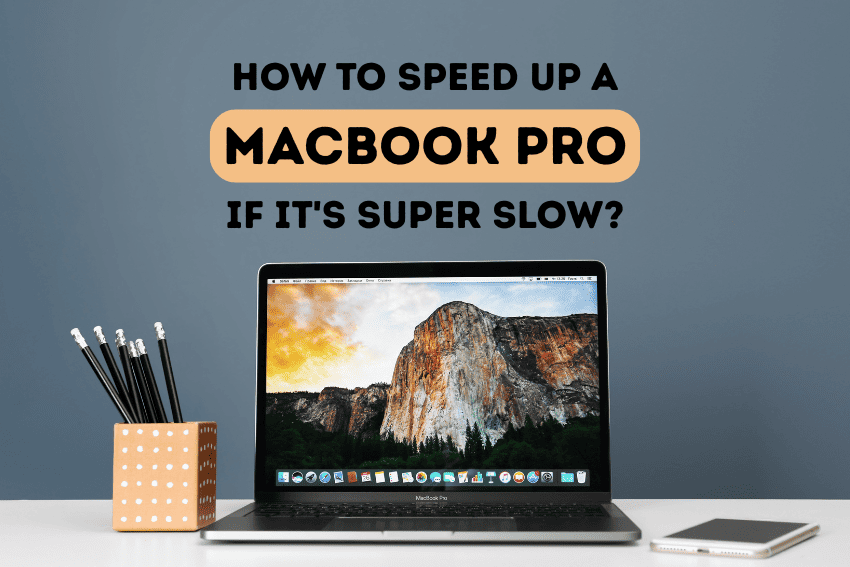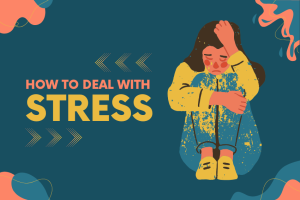Speed Up a MacBook Pro — if you’ve ever typed this phrase into Google, you’re not alone. Most users of MacBooks Pro PCs observe that after some period, the high-performance device slows down. Apps load slowly, the beachball cursor goes round and round and even basic operations like browsing or modifying documents are heavy. Slow MacBook can impact your productivity, creativity and even your peace of mind.

However, you do not need a new MacBook to solve the problem in most cases. The improvement of your current MacBook Pro in condition and restoration of its power is possible with great steps made. This guide covers practical methods to speed up a MacBook Pro, whether it’s an Intel-based model or the newer Apple Silicon M1/M2 versions.
We will look into both temporary solutions and more profound optimizations to get your MacBook well running once again.
Why Do MacBook Pros Become Slow?
Prior to exploring solutions, it might be good to know why your Mac runs slowly. The usual reasons are:
- Too Many Startup Programs: It loads programs every time you switch on your Mac that take a lot of memory.
- Low Disk Space: Your Mac computer is sluggish when your drive approach its maximum capacity.
- Outdated macOS or Apps: Outdated software may slow down the system.
- Crowded Browser Tabs: Safari, Chrome and Firefox are resource intensive as far as RAM usage is concerned.
- Background Processes: runs behind process or apps waste the CPU resources.
- Outdated Hardware or Battery Problems: In some cases, slowdowns are because the hardware is outdated.
These factors can be improved considerably by improving speed.
Start with the Basics: The Quick Wins
The solutions are at times very simple and with the quickest results. The following tips are simple. Give them a shot before going deeper.
Restart Your MacBook Pro
It sounds trivial, but it’s the most effective first step. A restart clears the RAM (Random Access Memory), which gets cluttered with temporary files from apps you’ve been using. It also troubles stopping any background processes that may have gone rogue. Turn off your Mac, hold on for a second, and then turn it back on.
Check for macOS Updates
Apple regularly releases updates that include performance enhancements and bug fixes that can directly impact your Mac’s speed.
The performance improvement and bug fixes are common inclusions of the periodic updates issued by Apple and they can directly affect the speed of your Mac.
- Go to Apple menu > System Settings > General > Software Update.
- Install any available updates. This is an important procedure in having a healthy and quick system.
Keep Your Desktop Clean
It may seem surprising, but a cluttered desktop covered in files can slow down your Mac. macOS treats every icon on your desktop as a live window, consuming graphical resources. For a quick performance boost, especially when using Mission Control, move files from your desktop into organized folders elsewhere.
Taming Software and Processes
If the basics didn’t fully solve the problem, it’s time to look under the hood at what’s running on your machine.
Manage Login Items and Background Processes
Applications that launch automatically when you log in can significantly slow down your boot time and run constantly in the background.
- Go to System Settings > General > Login Items.
- Review the list under “Open at Login.” Select any non-essential apps and click the minus (–) button to remove them. You can always open them manually later.
Check Activity Monitor for Resource Hogs
Activity Monitor is your window into everything your Mac is doing. It shows you which apps or processes are using the most CPU, Memory, and Energy.
- Open Activity Monitor (find it in Applications > Utilities, or search for it with Spotlight).
- Click on the “% CPU” column to sort processes by how much of your processor they are using. If you see an app you’re not actively using at the top of the list, you can select it and click the stop (X) button to quit it.
- Do the same for the “Memory” tab. Look for processes using a significant amount of RAM.
Disable Unnecessary Visual Effects
macOS has sleek animations, but they require graphical power. Reducing them can make an older MacBook Pro feel snappier.
- Go to System Settings > Accessibility > Display.
- Turn on Reduce motion and Reduce transparency.
Disable Unnecessary Extensions
Browser extensions and system add-ons can be a major source of bloat.
- For Safari: Go to Safari > Settings > Extensions and uncheck or remove ones you don’t need.
- For macOS: Go to System Settings > Privacy & Security > Extensions to review and manage extensions for other apps.
Check for Malware or Adware
While rare, Macs can be affected by adware and malware that consume resources. Symptoms include unexpected ads, browser homepage changes, or unknown processes in Activity Monitor.
- Run a scan with a trusted tool like Malwarebytes for Mac (free version available) to quickly identify and remove common pests.
Optimizing Storage and Hardware
For older MacBook Pros or those that need every bit of performance, these steps can make a world of difference.
Free Up Storage Space on Your Startup Disk
Your Mac needs free space on its main drive (typically named “Macintosh HD”) to function properly. macOS uses free space for virtual memory and temporary files. When space gets critically low (less than 10-15% free), performance suffers dramatically.
- Go to Apple menu > About This Mac > Storage. You’ll see a visual breakdown of what’s using your space.
- Focus on the big culprits: Applications, Documents, and System Data.
- Use the “Recommendations” provided by Apple here, like storing files in iCloud or optimizing storage.
Use Built-in Optimization Tools
macOS includes powerful tools to help maintain your system.
- Run Disk Utility: Occasionally, your drive’s directory can become corrupted. Use Disk Utility’s “First Aid” feature to check and repair it.
- Open Disk Utility (Applications > Utilities), select your main volume, and click “First Aid.”
- Manage Spotlight Indexing: If your Mac seems slow right after a big update or file migration, Spotlight might be re-indexing your drive. Let it finish (a progress bar appears in the Spotlight search menu). You can manage which locations are indexed in System Settings > Siri & Spotlight.
Consider a Hardware Upgrade (If Applicable)
If you have an older MacBook Pro (pre-2016), you might have upgradeable components.
- Upgrading to an SSD: If your Mac still has a traditional hard disk drive (HDD), replacing it with a Solid State Drive (SSD) is the single biggest performance upgrade you can make. Boot times and app launches become exponentially faster.
- Adding More RAM: If your Mac allows it and you constantly max out your memory (as seen in Activity Monitor), adding more RAM will allow you to run more applications smoothly simultaneously.
The Nuclear Option: Reset NVRAM and SMC
- NVRAM stores settings like screen resolution and startup disk selection. Resetting it can fix various quirks.
- Shut down your Mac. Turn it on and immediately press and hold Option + Command + P + R for about 20 seconds.
- SMC manages physical components like fans and batteries. Resetting it can help with performance issues, especially on older Intel-based MacBook Pros.
- The process varies between Intel Macs with and without the T2 chip. Check Apple’s official guide for precise instructions.
Last Resort: Erase and Reinstall macOS
Over years of use, system files can become corrupted and clutter accumulates. A fresh install of macOS is like a factory reset for your computer, wiping away all the digital cobwebs.
Warning: This will erase all data on your Mac. You must have a complete and verified backup using Time Machine or another method before attempting this.
Conclusion
Learning how to speed up a MacBook Pro if it’s super slow doesn’t require being a tech expert. Refreshing your Mac July may be as easy as implementing the tips found in this guide such as controlling startup applications, clearing disk space, upgrading software versions and streamlining system resources.
A sluggish MacBook Pro does not imply that it is time to cry over spilled milk. Any tweaks and attention will ensure you can use your computer to a higher level of performance and multitasking and get more out of your system.
Frequently Asked Questions (FAQs)
Why is my MacBook Pro so slow all of a sudden?
When your computer suddenly slows down, it’s usually one of a few things. Sometimes one program goes out of control. Other times a recent update is still sorting files in the background (Spotlight does this on Macs). An app might also be eating up too much power. Open Activity Monitor to see what’s causing the problem. If nothing looks normal, it might be malware, so run a scan just to be safe.
Does cleaning my Mac physically help it run faster?
Cleaning won’t make your programs run faster, but it does keep your computer healthy. Dust blocks fans and vents, trapping heat inside. When the machine overheats, the processor slows down to protect itself. Blowing the vents out with compressed air every now and then stops this from happening.
How much free storage space should I keep on my Mac?
A good rule of thumb is to maintain at least 15-20% of your total storage capacity as free space. For a 500GB drive, that’s about 75-100GB. This gives macOS ample room for virtual memory and temporary files.
Will resetting my SMC or NVRAM delete any of my files?
No. Resetting the SMC or NVRAM won’t touch your files, apps, or personal stuff. It just clears out some low-level hardware settings and starts them fresh.
Is it worth upgrading the RAM or SSD in a MacBook Pro?
For older Intel models, yes. Adding RAM or an SSD can transform performance. For newer M1/M2 models, RAM upgrades aren’t possible, but storage management is key.
Should I replace my MacBook if it’s still slow after trying everything?
If you’ve optimized everything, upgraded storage, and still face issues, it might be time to consider a new MacBook. Especially if your current model is more than 7–8 years old.


